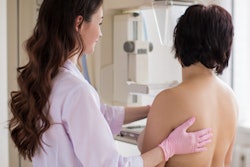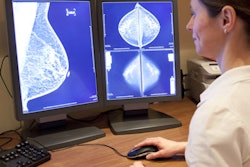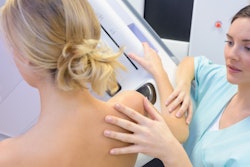
Technological advances have made it possible for breast imaging experts to read mammograms from miles away. In theory, telemammography sounds ideal for the COVID-19 pandemic, where social distance is required for the safety of patients and practitioners. In practice, it's more complicated.
In ordinary times, one of the biggest issues in women's imaging is the relatively high percentage of women who forgo regular breast screening. Telemammography utilizes modern technology, including digital breast tomosynthesis, digital mammography, and cloud computing, to provide an alternative, convenient breast screening solution, particularly for women in rural areas who may not have access to breast imaging specialists.
However, during the ongoing COVID-19 pandemic, many breast imaging centers have heeded expert guidance and postponed routine breast screening examinations -- shuttering exactly the type of imaging telemammography is best suited for.
 Dr. Hannah Chung.
Dr. Hannah Chung.Nevertheless, telemammography and telemedicine may still have roles to play during the current pandemic, according to Dr. Hannah Chung, assistant professor of breast imaging at the University of Texas MD Anderson Cancer Center in Houston.
"Telemammography is best suited for screening mammography; however, it can be used judiciously in the diagnostic setting," Chung told AuntMinnie.com. "In that setting, it is particularly important that good communication and adherence to quality are in place."
Diagnostic imaging, video consults, and postpandemic care
Breast imaging in the diagnostic setting may still be necessary for certain patients during the pandemic, Chung noted. The addition of automated breast ultrasound (ABUS) exams may help alleviate radiologists' concerns related to the physical inability to scan the patient directly.
"Automated breast ultrasound examinations are currently being used predominantly as a screening tool, but in a telemedicine setting where the radiologist cannot directly scan the patient, use of ABUS would be an excellent way to ensure adequate coverage of the whole breast," she said.
Breast practices can also employ telemedicine during the pandemic to increase the use of video consultations.
"While current social distancing recommendations are in place, telemedicine consults are being employed to address other health-related concerns," Chung said. "Specifically for breast concerns, a combination of video consults and telemammography may be used to triage the level of breast urgency."
Finally, telemammography may have a new role to fill in breast imaging workflows as practices open back up and see patients who had postponed their breast imaging exams during the pandemic.
"As we start to get back to normal operations, telemammography alone, or in conjunction with automated breast ultrasound and video conferencing, can help provide and triage care, while minimizing the risk of delayed diagnosis related to delays in healthcare," Chung said.
Getting started with telemammography
Chung emphasized that telemammography is not for everyone. Radiologists interested in telemammography should be experienced, diligent, and practice continuous self-auditing of their practices, she noted. They should also understand the technology's limitations, as well as what it's well-suited for, namely screening and noncomplex diagnostic indications.
Nevertheless, the current pandemic shouldn't stop a well-qualified and interested radiologist from trying telemammography.
"If the above qualities fit, and a radiologist loves to read mammograms, then telemammography is an extension of the current breast practice and can be used to improve the quality of care, regardless of location or the current pandemic we find ourselves in," Chung said.



















